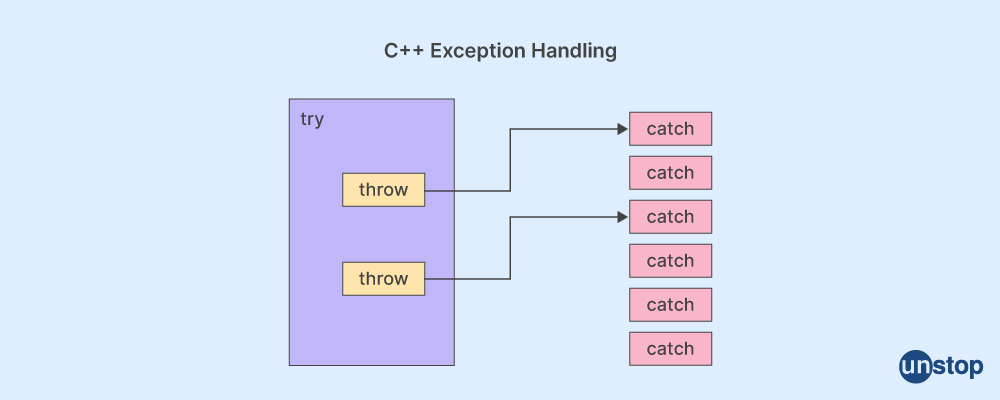C++实用技巧:std::string_view在错误处理中的3个关键应用
发布时间: 2024-10-22 19:44:53 阅读量: 29 订阅数: 21 


C++17 使用 std::string_view避免字符串拷贝优化程序性能

# 1. std::string_view简介与基础
在现代C++编程中,`std::string_view`是一个轻量级的类,它提供对已存在的字符序列的只读视图。这使得它在多种场景下成为`std::string`的优秀替代品,尤其是当需要传递字符串内容而不是拥有字符串时。本章将介绍`std::string_view`的基本概念和使用场景,为读者提供一个坚实的理解基础。
## 1.1 std::string_view定义与用途
`std::string_view`定义在头文件`<string_view>`中,它由两个成员组成:一个指向字符数组的指针和一个表示数组长度的大小。与`std::string`相比,`std::string_view`不拥有任何字符数据,因此可以提供零开销的字符串操作。
```cpp
#include <string_view>
std::string_view sv("Hello, World!");
```
在这个例子中,`sv`是一个`std::string_view`对象,它引用了"Hello, World!"字符串的字符序列。这种视图可以在不需要复制整个字符串的情况下,高效地传递字符串数据。
## 1.2 std::string_view的优势
使用`std::string_view`的一个主要优势是性能。由于不涉及字符数据的复制,它在性能敏感的应用程序中特别有用。例如,在函数参数传递时,使用`std::string_view`可以避免不必要的`std::string`拷贝,从而减少内存分配和释放的开销。
此外,`std::string_view`可以在任何需要字符串常量时使用,它还能够被用作函数重载的分辨依据,因为它不保证拥有数据,所以可以被用来区分拥有和不拥有数据的函数。
总结起来,`std::string_view`作为一个灵活且高效的字符串处理工具,能够有效提升代码性能,并且在API设计中减少资源消耗。在后续章节中,我们将深入探讨`std::string_view`在内存效率优化、错误处理以及实践案例中的应用。
# 2. std::string_view在内存效率优化中的应用
## 2.1 std::string_view与std::string的性能对比
### 2.1.1 内存占用分析
在现代C++编程中,`std::string_view` 和 `std::string` 是处理字符串的两种常见选择。理解它们的内存占用差异对于设计高效的内存使用策略至关重要。
- `std::string_view` 指向一个字符串字面量或其他字符序列,它本身不拥有数据,因此内存开销非常小,通常只有几个字节。
- `std::string` 是一个拥有自己内存空间的字符串容器,它在内部存储字符数组,以及数组大小和容量的相关信息。这意味着它会分配与字符串内容大小成比例的内存。
为了直观展示这两种类型的内存占用差异,我们通过一个简单的例子进行比较:
```cpp
#include <iostream>
#include <string>
#include <string_view>
void memoryUsage() {
std::string str = "Hello, World!";
std::string_view sv = "Hello, World!";
std::cout << "std::string memory usage: " << sizeof(str) << " bytes\n";
std::cout << "std::string_view memory usage: " << sizeof(sv) << " bytes\n";
}
int main() {
memoryUsage();
return 0;
}
```
从上述代码我们可以看出,`std::string` 的内存占用远远大于 `std::string_view`。这在处理大量小字符串时尤其重要,例如日志消息、配置选项等,使用 `std::string_view` 可以显著减少内存使用。
### 2.1.2 赋值与拷贝的性能测试
在赋值和拷贝操作方面,`std::string_view` 与 `std::string` 的性能差异更加明显。
- 当赋值 `std::string_view` 时,仅复制指针和字符串长度信息,几乎没有性能开销。
- 相对的,赋值 `std::string` 时,需要复制实际的字符数组内容到新对象中。
我们可以使用以下代码来测试这两种类型的性能:
```cpp
#include <chrono>
#include <iostream>
#include <random>
#include <string>
#include <string_view>
#include <vector>
void performanceTest() {
const size_t numIterations = 1000000;
std::string longString = "Very long string that will be copied many times...";
std::string_view sv = longString;
auto start = std::chrono::high_resolution_clock::now();
std::string str;
for (size_t i = 0; i < numIterations; ++i) {
str = longString;
}
auto end = std::chrono::high_resolution_clock::now();
std::chrono::duration<double> diff = end - start;
std::cout << "std::string copying took " << diff.count() << " seconds\n";
start = std::chrono::high_resolution_clock::now();
std::string_view strView;
for (size_t i = 0; i < numIterations; ++i) {
strView = sv;
}
end = std::chrono::high_resolution_clock::now();
diff = end - start;
std::cout << "std::string_view copying took " << diff.count() << " seconds\n";
}
int main() {
performanceTest();
return 0;
}
```
在测试中,我们可以预期 `std::string` 的拷贝时间将明显长于 `std::string_view`,因为 `std::string` 需要复制大量数据。
## 2.2 避免不必要的字符串拷贝
### 2.2.1 拷贝省略与std::string_view
C++17 引入了“拷贝省略”(copy elision)技术,这是一种编译器优化技术,可以完全避免某些情况下不必要的拷贝。然而,拷贝省略并不总是发生,特别是在一些复杂的调用中。而 `std::string_view` 则天然不会发生拷贝,因为它是对现有数据的无所有权引用。
假设我们有一个函数,它以 `std::string` 作为参数。每次调用这个函数,如果传入的是一个临时字符串,拷贝省略可能会发生,也可能不会。使用 `std::string_view` 则可以保证不进行任何拷贝:
```cpp
void processString(const std::string& str) {
// Processing the string...
}
void processStringView(std::string_view sv) {
// Processing the string view...
}
int main() {
processString(std::string("Hello, World!")); //拷贝可能被省略
processStringView(std::string_view("Hello, World!")); //无拷贝
return 0;
}
```
### 2.2.2 在API设计中减少拷贝的技巧
API 设计时考虑拷贝是重要的性能优化手段。如果函数参数或返回值需要进行拷贝操作,考虑使用 `std::string_view` 替代 `std::string` 可以有效减少拷贝:
```cpp
// Avoid using std::string as return type or parameter to avoid unnecessary copies
std::string expensiveToCopyFunction() {
std::string str = "Very long string...";
return str;
}
// Prefer std::string_view where appropriate to avoid copying
std::string_view efficientFunctionView() {
static const std::string longString = "Very long string...";
return std::string_view(longString);
}
```
在 `expensiveToCopyFunction` 中,每次返回一个新字符串都会导致不必要的拷贝。相反,在 `efficientFunctionView` 中使用 `std::string_view`,没有任何拷贝发生,因为它只是传递一个引用。
## 2.3 字符串视图在临时作用域的应用
### 2.3.1 局部变量的生命周期管理
在函数或代码块中,使用局部变量可以管理数据的生命周期。如果需要在函数内部创建字符串视图,考虑如下:
```cpp
std::string_view createStringView() {
std::string data = "Temporary data";
std::string_view view(data);
return view;
}
```
上述代码中,`view` 是一个临时的 `std::string_view`,它引用了 `data` 中的数据。由于 `std::string_view` 是一个轻量级对象,它的创建几乎没有性能开销,非常适合用于临时数据处理。
### 2.3.2 临时对象的创建与销毁
在某些场景下,可能需要创建临时的字符串视图对象。临时对象的创建和销毁通常非常快,因为它不需要实际分配内存:
```cpp
void processTemporaryViews(std::string_view sv1, std::string_view sv2) {
// Process the temporary views...
}
int main() {
std::string longString = "Long string data...";
processTemporaryViews(std::string_view(longString), std::string_view("Another temporary view"));
return 0;
}
```
这里,我们创建了两个临时的 `std::string_view` 对象,并在函数 `processTemporaryViews` 中使用它们。由于 `std::string_view` 不拥有数据,所以这些临时对象的创建和销毁没有内存分配和释放的开销。
接下来的内容会展示更多关于 `std::string_view` 的高级技巧和注意事项,以及它的实践案例分析。
# 3. std::string_view在错误处理中的应用
随着编程实践的深入,错误处理在软件开发中扮演着至关重要的角色。std::string_view作为一种轻量级的字符串处理工具,同样可以在错误处理领域发挥其作用,特别是在避免异常和优化错误信息传递方面。本章节将探讨std::string_view在错误处理中的应用,并介绍一些实践技巧。
## 3.1 用作函数返回类型避免异常
### 3.1.1 std::string_view作为错误信息的传递者
在C++11之前,开发者通常使用字符串指针或std::string来返回错误信息,但这些方法要么可能导致资源泄漏,要么在函数需要返回多个错误信息时不够灵活。std::string_view提供了一种避免这些缺陷的方案。
与std::string不同,std::string_view不负责数据的拥有权,因此不会引起拷贝或移动的开销,仅提供对现有数据的非拥有性视图。当错误信息存储在永久性内存区域(如静态字符串或程序已有的字符串缓冲区)时,使用std::string_view能有效地传递错误描述,同时避免异常的发生。
```cpp
const std::string_view get_error_message(int error_code) {
static const std::string_view error_messages[] = {
"No Error",
"File Not Found",
"Access Denied",
"Out of Memory"
};
if (error_code < 0 || erro
```
0
0






